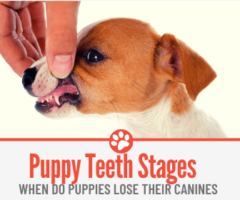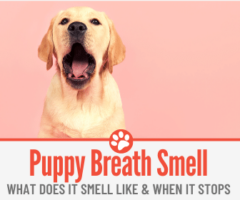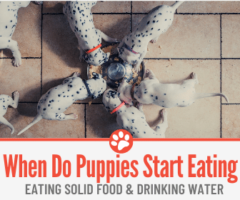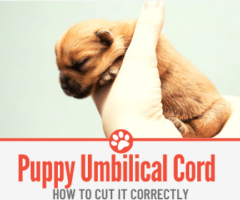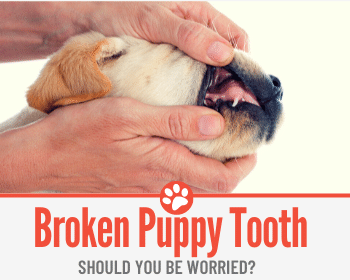 My puppy broke a tooth and although she didn’t seem too bothered by it, the pink inside was visible. A large piece of her top left canine had split off, with the broken canine tooth now in half, and there was a crack in the next tooth as well; none of the teeth were wobbly.
My puppy broke a tooth and although she didn’t seem too bothered by it, the pink inside was visible. A large piece of her top left canine had split off, with the broken canine tooth now in half, and there was a crack in the next tooth as well; none of the teeth were wobbly.
She didn’t look like she was in pain, but then she wouldn’t let me touch her teeth either, so they must have been a little sensitive.
Being able to see the pink pulp worried me. Is it bad if a puppy breaks a tooth? Can a dog die from a broken tooth? Is a broken dog tooth an emergency?
I love my pup and all these thoughts started swirling around my head. Luckily I managed to find the answers, which I’m keen to share with you here now.
Should I be worried about my puppy’s broken tooth?
It’s quite normal for dogs to fracture or break their teeth. Simple actions like chewing hard items, to more significant events, such as accidents, like being hit by a car, ball or rock, can cause the damage. Depending on how much has broken off will determine how serious the problem is.
Small chips and fractures can be left untreated, but if the puppy’s broken tooth results in pulp being exposed, infection can get in and spread; in worst cases causing sepsis and death. Antibiotics will quickly address the infection, but the tooth must be repaired and/or removed for reinfection to be avoided.
What happens if a puppy tooth breaks?
First, be sure that the lost tooth is not as a result of teething, which will start from around 3 weeks and continue to 30 weeks, when the set is replaced with adult teeth.
If you are confident that the lost tooth is due to damage, or the tooth is partially damaged then you are likely to need a trip to the vet. Small chips or fractures are not too much of a worry (although treatment might still be needed). It’s when the root canal is open to the elements that things become concerning.
Bacteria from the mouth, and whatever the puppy is chewing on, can get into the pulp. The resulting infection can attack the tooth, causing it to die. The tooth may then fall out or need extraction. There is the danger, though, that in such cases the bacteria harbouring in the rotten tooth jump into the bloodstream and bone in the jaw around the tooth, continuing their destruction.
If the infection progresses into the rest of the body, it will spread to the kidneys, liver and heart via the blood, reeking damage on the areas it comes into contact with. Severe damage to vital organs can in worst cases cause death.
Are some teeth more likely to break than others?
Any tooth can become damaged, but the teeth most likely to be chipped or fractured are those that are most involved in chewing – and in the case of puppies that’s their baby canines.
Types of broken teeth in puppies
There are two categories of broken dog teeth:
-
Uncomplicated Crown Fractures
This is where damage doesn’t extend deep enough to expose the root canal. Only the layer beneath the enamel, called dentin, is exposed.
-
Complicated Crown Fractures
In these cases the damage affects the root canal.
These will be treated in different ways.
Treatment options for a broken puppy tooth where the pulp is NOT exposed
If the pulp of the tooth has not been exposed through the damage (an uncomplicated crown fracture) the first step is to determine whether the tooth is dead or alive, as this will dictate the course of treatment.
Oral examinations, particularly effective in larger breeds, will show whether any teeth are in need of repair.
Uncomplicated crown fractures typically result in the dentin, the underlying tooth structure, becoming exposed. The damage uncovers dentinal tubules and their nerves and therefore creates significant pain for the animal.
The trauma to the tooth can result in the tooth dying, inflammation, or direct pulpal invasion via the dentinal tubules. Radiography will determine whether the tooth is dead or still alive. If the tooth is dead (evidenced by bone loss at the tips of the tooth) it will need to be root canalled or extracted.
If it is still alive, a bonded sealant can be applied to decrease sensitivity, block off the pathway for infection and smooth the tooth to decrease periodontal disease.
Treatment options for a broken puppy tooth where pulp IS exposed
Leaving complicated crown fractures (where the pulp in a damaged tooth is exposed) is not an option, because of the risk of further infection and pain to the animal.
The vet has three choices:
i) Root canal treatment
ii) Vital pulp treatment
iii) Extraction
Root canal treatment
If the tooth is otherwise healthy, the preferred option is to perform root canal treatment.
In this procedure the infected root canal tissue (the pulp) is removed and then steps are put in place to prevent bacterial recontamination. This works best for the upper fourth premolars and lower first molars, but any tooth can be saved in this manner.
The advantages of root canal treatment, compared to extraction, are::
-
You save the tooth
-
You preserve the strength in the jaw
-
Surgical pain, especially with large teeth, is avoided
-
It decreases the risk of surgical complications
Vital pulp therapy (VPT)
This is the best option for animals under 18 months of age, because their teeth are generally not mature enough for root canal treatment until that age. Once the teeth have matured, root canal treatment has a much better prognosis. If VPT must be performed, it should be done as soon as possible.
Tooth extraction
This is the choice of last resort, especially if it involves a ‘strategic tooth’ (i.e. one of the most useful teeth, such as the canines, the upper fourth premolars or lower first molars.)
Extraction is ideally avoided because:
-
These are large teeth with very large roots. The root of the canine is twice as long as and wider than the crown (the part you can see). Extraction of these teeth necessitates very invasive oral surgery. It’s not a quick and simple extraction.
-
The tooth is often vital for the chewing and eating process, so without it the dog is at a disadvantage.
-
Other orthodontic problems can occur as a result of losing the tooth.
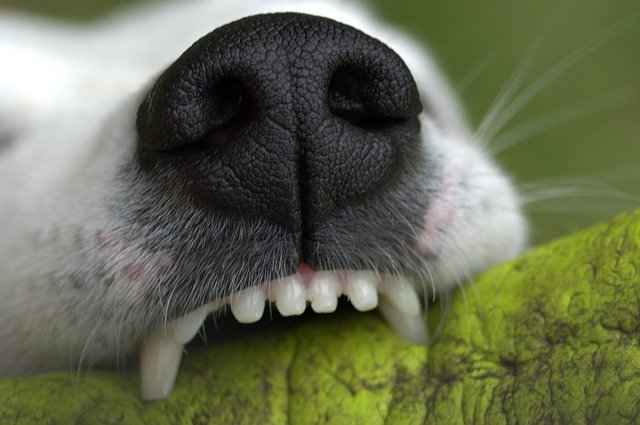
How to identify a broken puppy tooth
-
Regularly inspect your puppy’s mouth
It’s good practise to give your dog an oral check up on a regular basis. Do it alongside his/her daily toothbrushing and it will become part of the routine. During check up you will see whether anything has changed, whether any teeth are chipped or fractured, any gums swollen or discoloured or whether the tongue is hurt at all.
To be sure you can recognise what good looks like, take a mental note of your dog’s mouth after a visit to the vet for a dental cleaning and when they are in good shape.
Every dog is different and some have unusual markings or colourings, which you need to be able to recognise. Most gums are pink, but some are pigmented. If you are aware of this you won’t inaccurately diagnose a problem.
-
Look out for signs of infection
Signs of infection in the mouth are any discharge, really bad breath and bleeding or swollen gums, as well as chipped/broken teeth, which can lead to infection.
-
Also look out for swelling or redness around your puppy’s mouth and jaw
Swelling, redness or overly warm skin are usually signs that there is an infection building. These external symptoms help you spot a problem that is starting to become quite serious and needs addressing as soon as possible.
But note, that not all infections will display these signs, so your dog may have an infected tooth and no visible symptoms. Every dog, and every infection, is different, and that is why it is so important that you learn what is normal for your animal.
-
Know the signs of dental pain
Dogs, and most animals, have an inbuilt mechanism to deal with pain and so don’t display that they are suffering the way humans do. In the wild it would be perceived as a weakness, putting the animal in jeopardy. An infection inside of the mouth will cause your dog to be in pain. Signs to look out for include excessive drooling, tenderness of the face, depression or fearfulness, and hesitation to eat or drink.
-
Discuss with a veterinary professional
If you are at all unsure, consult your veterinary specialist. If it is a severe case or your vet is not well experienced with tooth damage, ask for a referral to a veterinary dentist.
Is a chipped puppy tooth painful?
If you can see the pink pulp, then the root canal is exposed. Even though in most cases your animal won’t display signs of being in pain, such damage can be excruciating. It is the owner and vet’s responsibilities to treat the damage, so that the animal is put out of discomfort.
What do do if puppy tooth is broken at the gum line?
Your puppy’s tooth might even break right at the gum line. If this happens it is a trip to the vet. Such a severe break will expose the internals of the tooth, which can easily become infected.
A broken puppy tooth can cause skin abscesses
A sign that your dog has a broken tooth can be the appearance of a wound just below the eye. Usually this is as a result of damage to the upper fourth premolar, so it is more likely to be seen in adult dogs, but it can occur in puppies from other teeth too. Such tooth root abscesses are caused by the damage to the tooth tip becoming so badly infected that it breaks out through the skin. It sounds horrible (and it is for the dog!) but it can easily be treated with antibiotics. Secondary infections to an infected canine are also common causes of such abscesses.
Antibiotics will usually resolve the problem for a while, but the infection is likely to reoccur if the offending tooth is not appropriately dealt with.
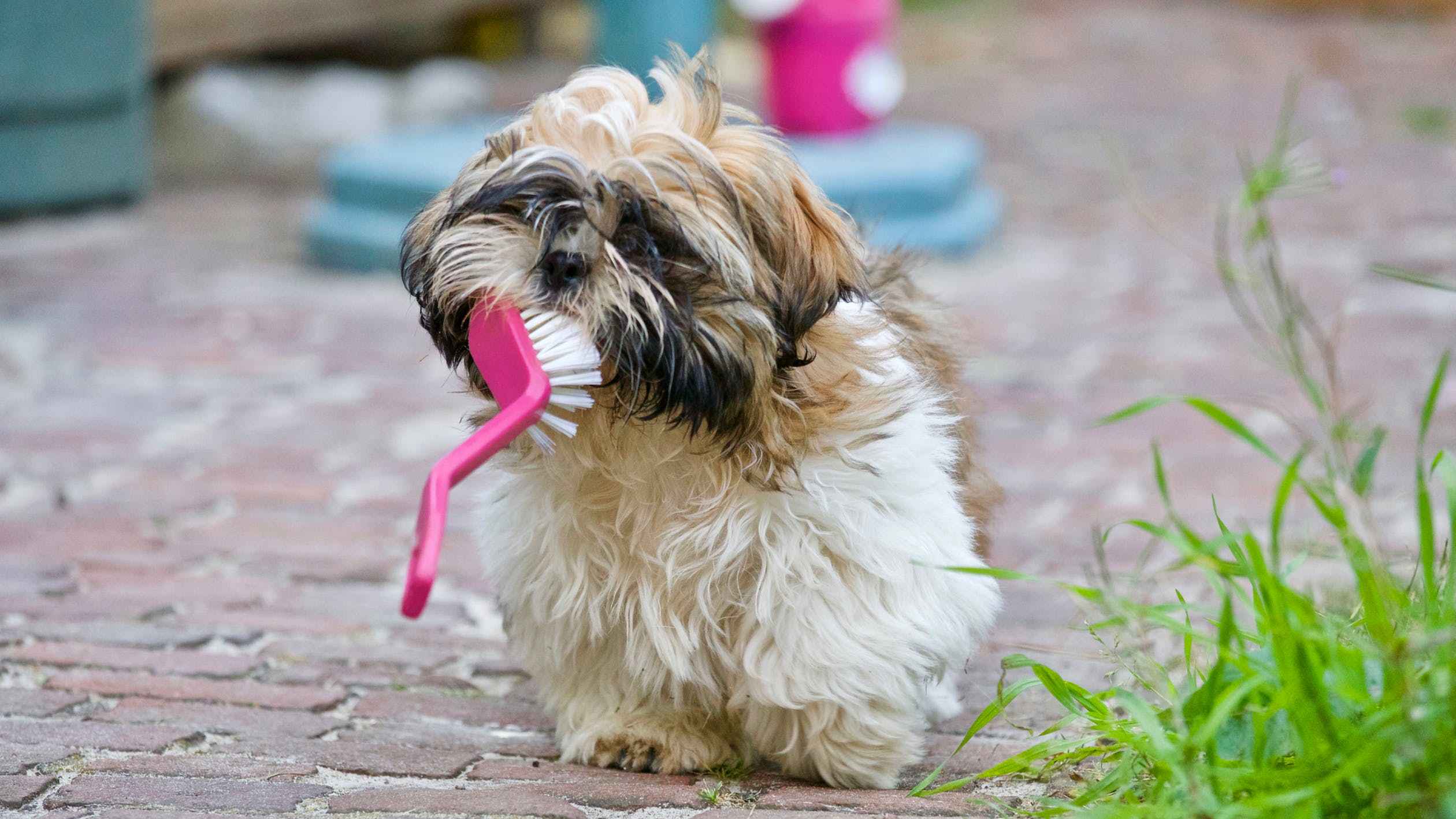
Broken puppy tooth aftercare
The type of aftercare your dog needs depends on the treatment it received. Your vet will be able to guide you, as well as prescribe any additional medication.
With tooth sealing or root canal
Recovery is fast, and pain should not be too strong, meaning your pet will be able to eat and drink that day.
Any operation that requires anesthesia
Until your dog awakes, they will need to be monitored and checked that all is well. As the dog wakes it might become disorientated or feel ill from the anesthetics, and could therefore react negatively.
Tooth extraction
This is the most intrusive of the treatments and results in the most pain and longest recovery time. Your puppy will most likely be prescribed pain relief, as well as antibiotics to keep infections from developing at the site of surgery. You will need to monitor the wound, making sure it is healing properly. Watch out that your pup doesn’t scratch or rub against it and accidentally reopen the wound. As it heals it may become itchy and so this is a concern.
How much does it cost to fix a broken dog tooth?
Treating a dog’s broken tooth depends very much on the issue at hand – the type of damage, the breed of dog and the type of treatment needed to fix the problem. You can expect to pay between $300 and $1000 for the extraction of a large broken tooth.
Should I brush my puppy’s teeth?
It is a good idea to brush a dog’s teeth. As well as keeping your pet in good dental health, your puppy will get used to you retrieving objects from its mouth and inspecting its teeth, without it biting back or becoming overly anxious. Dental care is quite costly too, and so is ideally avoided.
Start brushing from an early age and you will hopefully avoid most of the complications a pet can suffer from. You can buy a toothbrush and toothpaste specifically suitable for dogs; don’t use human toothpaste, as it can make them sick. Initially just let your puppy familiarise itself with the toothbrush and paste without actually trying to brush its teeth.
Your dog is probably going to sniff these items and even try to lick or chew them. Don’t force the issue. Once your pup is happy with these new ‘toys’ start brushing daily. Your vet can show you the best techniques and give further advice.

